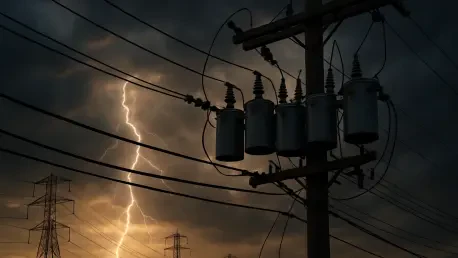The U.S. electricity demand is anticipated to grow at a compound annual growth rate (CAGR) of 2.5% through 2035, a significant escalation from a 0.5% CAGR observed in the previous decade. This upsurge stems from numerous factors, including the push for building electrification, substantial growth in data centers, industrial expansions, and the booming popularity of electric vehicles. The existing energy infrastructure, however, is struggling to keep pace with such growing appetites. A significant portion of the transmission and distribution networks is aging, with nearly 31% of transmission and 46% of distribution assets nearing or surpassing their intended lifespan. These outdated elements of infrastructure require major upgrades or replacement to ensure reliable and efficient service to the populace. The need for modernization is pressing as merely replacing infrastructure will not accommodate increasing demands or mitigate the risk of power outages. A comprehensive strategy is necessary to reimagine energy delivery systems that align with future electricity consumption patterns.
Challenges in Power Infrastructure
Utilities face formidable challenges in adapting to the changing landscape of power demand. While there is considerable effort exerted toward replacing old infrastructure, the focus on new developments remains insufficient. Current spending primarily targets maintenance rather than advancement, perpetuating a cycle of minor fixes without addressing the fundamental need for expanded capacity. This approach contributes to a notable rise in power outages and an overall fragility in energy service and delivery. The Senate Committee on Energy and Natural Resources has drawn attention to these issues, emphasizing hurdles such as extended generation interconnection timelines and lagging transmission projects. Amid these concerns, permitting and regulatory processes present additional challenges. The National Environmental Policy Act reviews can be redundant and protracted, stymieing timely project completion. Experts point towards streamlining these processes and enhancing coordination between agencies as vital steps to ensure swift project realization. Overall, overcoming these barriers requires a holistic approach that prioritizes efficient planning and execution.
Moreover, burgeoning demand has led utilities to emphasize the economic merits of transmission investment as a pragmatic solution. The rationale is clear: upgraded transmission networks can facilitate smoother, more efficient energy flow, bridging gaps between demand and supply. Despite some doubts over potential overestimations in utility growth forecasts, the data strongly supports a 2% annual growth rate in demand—a scenario that underscores the necessity for robust planning and investment in infrastructure. Addressing these challenges goes beyond mere financial concerns, demanding attention to regulatory, operational, and logistical aspects of energy management. Strategic infrastructure enhancements are pivotal to fostering a reliable, cohesive electricity network that can support present and future demands.
Innovations and Urgent Solutions
In response to mounting challenges, the energy sector is exploring innovative solutions to bolster grid reliability. Data center operators, such as Vantage Data Centers, exemplify how industries are addressing grid limitations. Facing sluggish grid-connected generation capacity, these operators often resort to alternatives like on-site generation and phased developments. Although these measures represent creative approaches to ensuring continuity and efficiency, they are not sustainable solutions for enduring national infrastructure growth. Individual adaptations must be matched with broad, systemic reforms to adequately prepare for future challenges in electricity demand and supply balance.
Efforts to synchronize infrastructure expansion with the projected rise in electricity needs are of paramount importance. A unified strategy that integrates policy, innovation, and investment will facilitate an energy ecosystem capable of meeting the expanding demands of consumers and industries alike. This necessitates meaningful collaboration between government entities, industry stakeholders, and utility companies, ensuring that infrastructure planning aligns with technological advancements and consumption patterns. Prompt actions should focus on a forward-looking vision that anticipates shifts in demand while innovatively upgrading aging infrastructure. Through such a cohesive approach, reliable and efficient energy delivery can be achieved, contributing to a sustainable and technologically advanced future.
Future Considerations and Strategies
The United States is expecting a 2.5% compound annual growth rate (CAGR) in electricity demand through 2035, a marked increase from the modest 0.5% CAGR seen over the past decade. Several factors contribute to this surge, including the drive for more electrified buildings, substantial growth in data centers, industrial expansion, and the increasing presence of electric vehicles. However, the current energy infrastructure is struggling to meet these increasing demands. A sizable portion of the transmission and distribution networks is aging; about 31% of transmission and 46% of distribution assets are approaching or have surpassed their original lifespan. These outdated elements need significant upgrades or replacements to maintain reliable and efficient service. Modernization is crucial, as merely replacing old infrastructure won’t suffice to meet future needs or reduce the risk of power outages. A comprehensive strategy is essential for reimagining energy delivery systems to align with evolving electricity consumption patterns.









